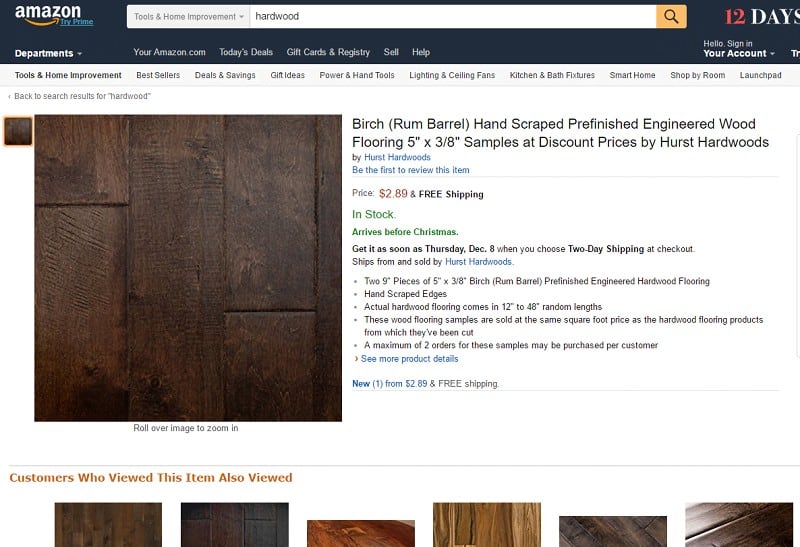Big Box stores like Home Depot/Lowes and specialty flooring stores currently sell flooring to home owners using old school methods: advertise to attract home owners to their stores, sell them the products, and then send a field rep to measure the floors, communicate the estimate to homeowners, sell the job, order the product(s), and schedule the installation.
The entire shopping process takes around two weeks–with multiple trips back to store–which is time-consuming and confusing. Customer experience also varies substantially over the process: from product selection, to onsite measure/estimate, to price comparison and installation.
- First, it is extremely non-transparent (i.e., Home Depot has privately labeled product SKU that homeowners cannot find anywhere else). Local stores do the same thing or show a wide-ranging SKU that makes it hard to compare apples-to-apples.
- Oftentimes, sales reps estimate flooring square footages with an inflated waste calculation. A former sales manager of a national flooring chain told me that their field guys measure the floor by adding 20% waste to the actual site square footage, and that number is quoted to the homeowner. Their office estimating staff generally figure out the actual waste (typically 5-8%) and allocate the rest as profit.
Amazon has been trying to provide home improvement services like plumber services, HVAC in Seattle and other limited locations, as well as investing in a contractor network.
Why can’t homeowners buy flooring like they would buy other products on Amazon? If they could, what might Jeff Bezos (technology entrepreneur and founder/chairman/CEO of Amazon) and Amazon’s offerings look like? Perhaps Bezos could:
- Acquire home plans from different sources (city planning offices, new home builders, etc.) and put them into a digitized format so room drawing and sizes can be easily extracted to determine the design (and product estimates).
- Solicit and/or profile local installers or service contractors to provide onsite measuring and installation services. The same Amazon review system can be used during the process so good contractors stand out with positive comments (82% of consumers buy on favorable reviews).
- Drive consumers to buy flooring products from Amazon merchants or from Amazon fulfillment centers and schedule local contractors for installation.
- Use their software algorithms to match the best professionals, track each step involved in service workflow, and record delivery process so a homeowner can easily track the process, similar to the way Amazon currently tracks product shipments. Money is captured on the Amazon side, so any disputes and quality issues will be adjudicated with the service providers prior to releasing funds.
I find myself going to Home Depot less often these days because buying products from Amazon is easier to search, less expensive, and home delivery is fast and free in 1-2 days with an Amazon Prime membership.
Since Home Depot entered the flooring market in the early 90s, it now earns more than 3 billion dollars from the flooring market annually. Are our retail folks in flooring ready to be a part of another challenge?
